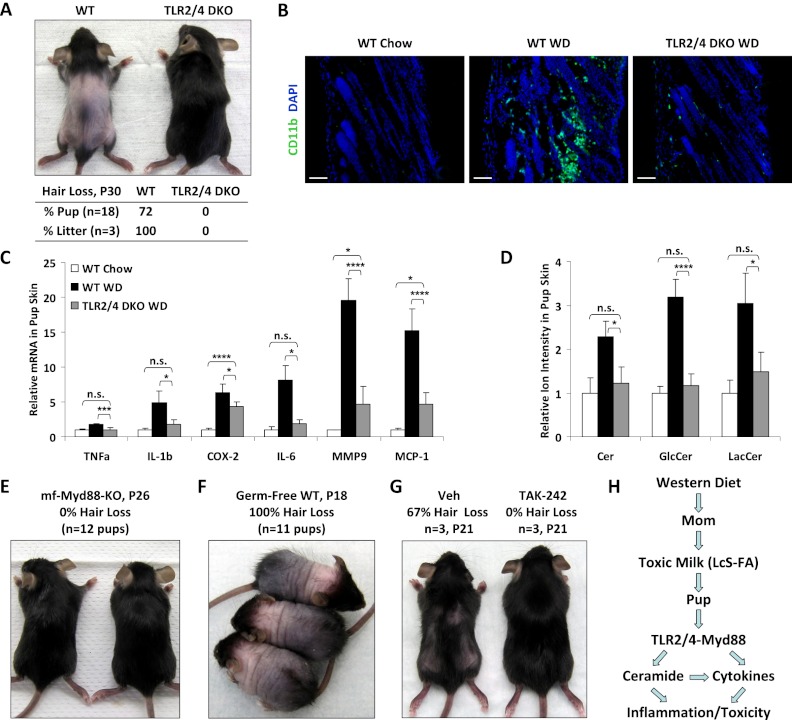Figure 4.
TLR2/4 deletion rescues maternal WD-induced neonatal toxicity. (A) TLR2/4 DKO mice were resistant to maternal WD-induced pup alopecia. (Top) A representative image of the pups. (Bottom) Penetrance of pup hair loss. (B) Leukocyte infiltration in the pup skin was reduced by TLR2/4 deletion. (C) Inflammatory gene expression in the pup skin was reduced by TLR2/4 deletion (n = 6). (D) Cer levels in the pup skin was decreased by TLR2/4 deletion (n = 3). (E) Macrophage (mf) Myd88 KO mice were resistant to maternal WD-induced pup alopecia. (F) Germ-free mice remained sensitive to maternal WD-induced pup alopecia. (G) Treatment with the TLR4 inhibitor TAK-242 prevented maternal WD-induced pup alopecia. Pups from the same WD mom were orally gavaged with either TAK-242 (10mg/kg per day) or vehicle control starting at P2. (H) A schematic diagram illustrating that maternal WD feeding causes the secretion of toxic milk containing excessive LcS-FAs, which activate the TLR2/4–Myd88 pathway to increase the levels of Cer as well as proinflammatory cytokines and enzymes in the nursing pups, leading to neonatal inflammation and toxicity.

